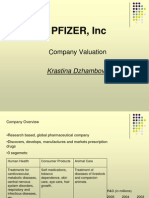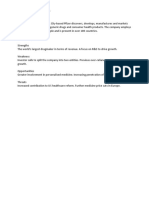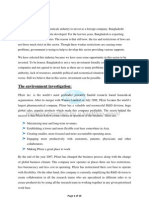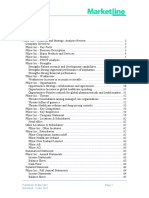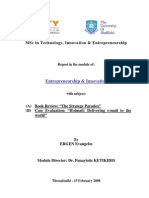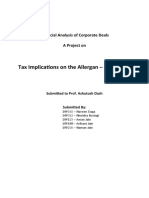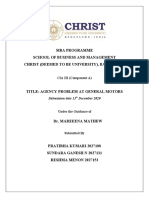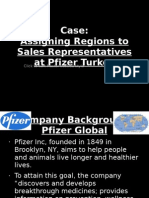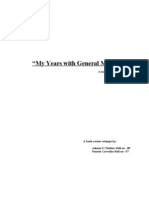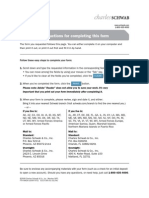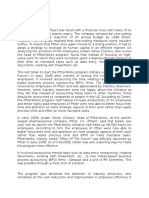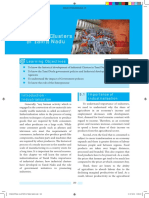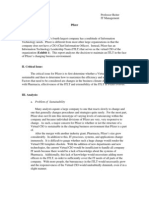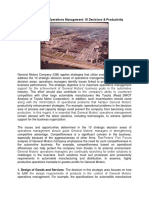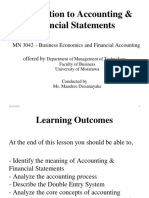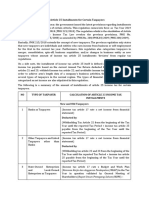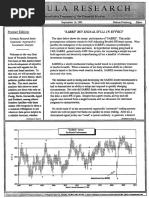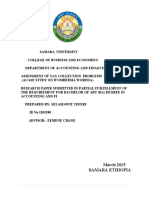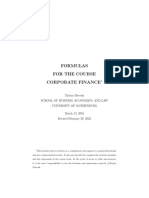0% found this document useful (0 votes)
106 views16 pagesPfizer Portfolio
Pfizer is an American pharmaceutical company headquartered in New York. It is one of the largest pharmaceutical companies globally and produces medicines across many medical disciplines. Pfizer faces challenges from major healthcare system changes in the US, slowing sales of top drugs, and potential pipeline setbacks. Pfizer was founded in 1849 and grew through scientific discoveries like penicillin. It has expanded through mergers and makes some drugs available at low costs in developing countries. Pfizer is now organized into three business lines: biopharmaceuticals, Upjohn established medicines, and consumer healthcare. Financial analysis from 2017-2018 shows decreases in net income, assets, and equity, though operating margins remained similar.
Uploaded by
Priyanka NCopyright
© © All Rights Reserved
We take content rights seriously. If you suspect this is your content, claim it here.
Available Formats
Download as DOCX, PDF, TXT or read online on Scribd
0% found this document useful (0 votes)
106 views16 pagesPfizer Portfolio
Pfizer is an American pharmaceutical company headquartered in New York. It is one of the largest pharmaceutical companies globally and produces medicines across many medical disciplines. Pfizer faces challenges from major healthcare system changes in the US, slowing sales of top drugs, and potential pipeline setbacks. Pfizer was founded in 1849 and grew through scientific discoveries like penicillin. It has expanded through mergers and makes some drugs available at low costs in developing countries. Pfizer is now organized into three business lines: biopharmaceuticals, Upjohn established medicines, and consumer healthcare. Financial analysis from 2017-2018 shows decreases in net income, assets, and equity, though operating margins remained similar.
Uploaded by
Priyanka NCopyright
© © All Rights Reserved
We take content rights seriously. If you suspect this is your content, claim it here.
Available Formats
Download as DOCX, PDF, TXT or read online on Scribd
/ 16

